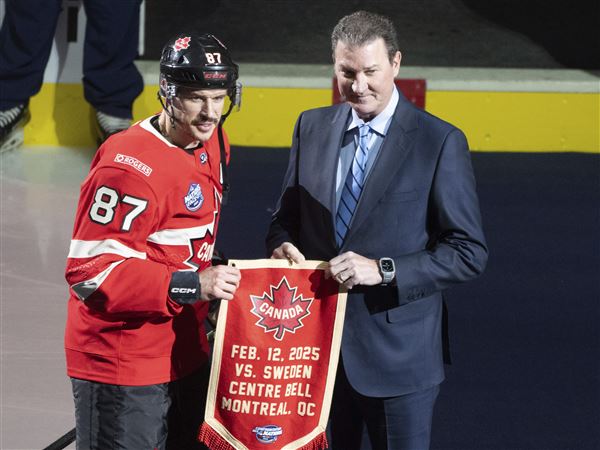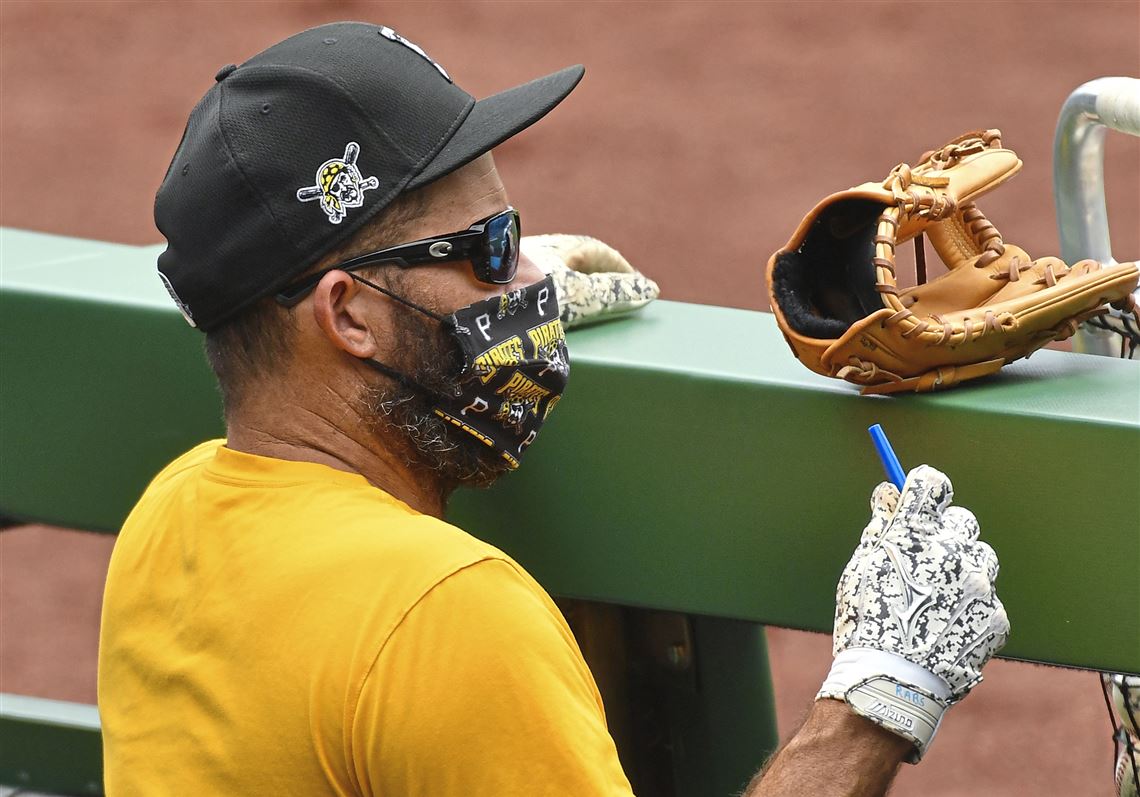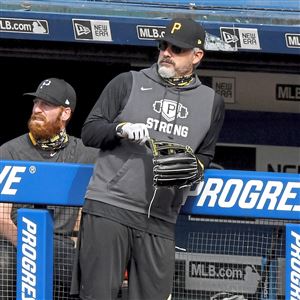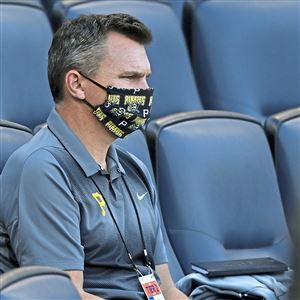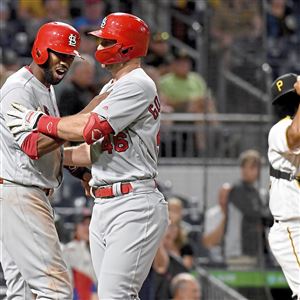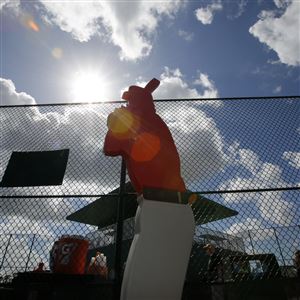Mike Rabelo has plenty of experience with baseball’s new speed-up rule for extra innings, as the Pirates assistant hitting coach actually managed High-A Lakeland (2018) and Class AA Erie (2019) in Detroit’s system each of the past two seasons.
But the rule that places a runner on second base to start the 10th inning has allowed Rabelo to draw really only two definitive conclusions: There are a ton of variables at play here, and it’s pretty much impossible to come up with any hard-and-fast rules on what a manager should do.
“I’ve seen it every which way,” Rabelo said. “Every night you end up walking away scratching your head. Just when you think you have a plan, it doesn’t work the next time you do it. It’s wild. Believe me, you’re going to see all sorts of stuff.”
While Rabelo didn’t divulge the intricacies of Pittsburgh’s extra-innings strategy, he did present a few scenarios that the Pirates and their fans will likely see this season. Here’s a look.
The offense
An easy assumption might be that it’s best to bunt the guy over and try to score him from third with one out via sacrifice fly or a well-placed ground ball. That would be wrong, especially when we’re talking about the visiting team.
“The matrix says it’s better to swing away,” Rabelo said. “Unless you’re the home team and you’re playing for that one run because the visiting team did not score.”
The “matrix” Rabelo referenced includes a set of numbers that reflect the probability of scoring a variety of ways: runner on second nobody out, runner on third with one out, etc. — 24 base-out states that tend to guide what managers do.
MLB.com actually did a fascinating analysis to tackle the bunt-or-not question, using data from 1960-2010 that was compiled by senior data architect Tom Tango and updating win expectancy charts to compare those first two base-out states.
As it turns out, the visiting team’s chances of winning dropped from 50% to 48% even if it successfully bunted that runner over to third, while the home team saw a modest improvement (81% to 83%) in its chances of winning. Both involved when the score was tied.
Furthermore, visiting teams that led off with a bunt won 47% of the time, while those that did not won 50.1% of games studied.
That would explain why the visiting team has bunted just 22% of the time to start the inning since the rule was implemented in the minor leagues in 2018, though Rabelo said it’s always tempting.
“When you’re the home team, it’s the bottom of the 10th and all you need is one run, and you have a guy who can handle the bat a little bit, it’s really hard not to bunt that guy over,” Rabelo said.
The defense
The new rule could also affect how relief pitchers are used, Rabelo said.
Say things are relatively equal between bullpen arms, meaning they’re both similarly capable of getting guys out.
Not even the dumbest manager in baseball will manage for extra innings and risk losing in nine, but if it all possible, don’t be surprised if in close games managers try to keep a strikeout-heavy reliever ready in case that outcome is drastically preferable to a ground ball.
“You’re on the road,” Rabelo said, concocting another hypothetical scenario. “The home team bunts that guy over. You bring in your closer, which generally you don’t do on the road [without a lead]. But you can also do that a lot here because sometimes these innings end quick.
“You have the infield drawn in with one out. You need a strikeout. Now you have your matchup. It gets crazy pretty quick.”
Another complicating factor, Rabelo explained, is speed.
Say Jarrod Dyson is batting, and it’s first and third with one out. With Colin Moran hitting, you’d play your shortstop and second baseman at normal depth, allowing them to cover more ground, confident you could turn two.
With Dyson, who’s faster, you likely have to play up and come home with the throw or only try to turn two if you were 110% sure of the second out, especially if Dyson represents the winning run.
“You may see the middle infielders having to play halfway,” Rabelo said. “You’re going to have to bring your middle guys in because that ground ball to shortstop is not a routine double play with [fast guys] running.”
The weird stuff
In one particular game, Rabelo took a gamble big enough that the opposing manager thought he might have been on drugs.
Sick of losing in extra innings, Rabelo tried something that was borderline crazy by intentionally walking a guy to bring up the opposing team’s No. 3 hitter, then putting on the wheel play to try and confuse him.
Rabelo knew the guy wasn’t going to bunt. But he had the first and third basemen charge late, potentially creating a dangerous scenario if the batter took a normal hack. Thankfully, he did not.
“I remember the first time I walked a guy to bring up their No. 3 hitter, the other manager looked at me like I was on mushrooms,” Rabelo said. “It ended up working. I was like, ‘I can’t believe this.’
“When he saw us run the wheel, you could tell that it was just too tempting to not try and hit the ball on the ground the other way. The dude has never done that as a left-handed hitter. From that point forward, I’ve tried to put guys in situations they’re not comfortable with.”
Of course, Rabelo tried the same thing a few games later, and it didn’t work, furthering his aforementioned theory on unpredictability.
One thing we do know, though, is that it doesn’t behoove teams to issue intentional walks. In the minor leagues, the home team has used that strategy just 12 times to start the top of an extra inning, while the road team did it on 130 occasions — a mere 5% of the time, according to MiLB data.
In the majors, intentional walks decreased win expectancy in every permutation, from 1% (road team pitching, game tied) to 12% (road team pitching, up two, thus putting the tying run on base).
The overall conclusion is that it’s probably better to sit back, resist over-managing and let the game play out.
“It’s going to be interesting to see how other teams handle it and how we handle it,” Rabelo said. “Because this is new to everybody.”
The results
In two years, during which Rabelo has gone 15-15 in extra innings, he’s seen leadoff, two-run homers; bunts thrown away and wild pitches, both scoring runs; safety and suicide squeezes that decided games; and plenty of sacrifice flies.
The craziness has certainly shortened games.
Minor league baseball had 345 games that went more than three extra innings in 2016-17. That number dropped to 43 over the past two seasons. After 45% of games from 2016-17 were decided after one extra inning, that number has increased to 73% with a runner starting the 10th on second base.
As a result, the rule has limited innings on young arms and also the number transactions minor league baseball teams have to make — the same sort of stuff MLB is looking to achieve in a 60-game season with a shortened ramp-up.
Another crazy thing is that, despite Rabelo believing it’s better for the home team, the numbers don’t exact bear that out.
Home teams won extra-inning games in the minor leagues 52% of the time in 2016 and 53.8% in 2017. Over the past two years, those numbers have dropped to 51% in 2018 and 50.5% last season, an indication that, yes, this really is a crapshoot.
“I don’t think it’s going to be a bunt-off, especially the visiting team,” Rabelo said. “They’re going to go up there trying to bang. But who knows, man? There might be something out there that I’m unaware of. I can’t wait to see how it plays out.”
Jason Mackey: jmackey@post-gazette.com and Twitter @JMackeyPG.
First Published: July 24, 2020, 9:00 a.m.


